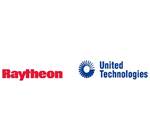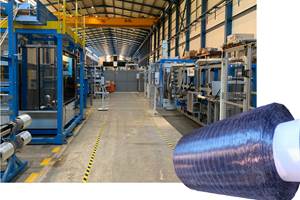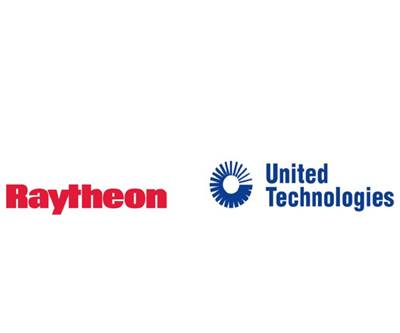Merger mania, part II?
Columnist Dale Brosius considers the surges of company mergers that have affected the composites industry over the years.
In June, aerospace and defense giants Raytheon (Waltham, Mass., U.S.) and United Technologies (UTC; Farmington, Conn, U.S.) announced they will merge by mid-2020 to form a single entity named Raytheon Technologies. If it goes forward, it will be one of the largest aerospace/defense mergers in history with pro forma revenues of $74 billion. Coincident with the merger, United Technologies will spin off or divest its Otis Elevator and Carrier (heating and air conditioning) subsidiaries, actions that were already planned for mid-2020 following the company’s acquisition of Rockwell Collins in 2018, after Rockwell Collins' acquisition of aircraft interiors supplier B/E Aerospace in 2017. UTC combined Rockwell Collins with UT Aerospace Systems (which was a combination of Hamilton Sundstrand and Goodrich Aerospace) to form Collins Aerospace. UTC will also bring Collins Aerospace and subsidiary Pratt and Whitney (jet engines) to the merger with Raytheon.
Are you lost yet? With so many moving pieces, it’s difficult to keep track. Over the last several years, there have been a number of mergers and acquisitions in the aerospace and defense arena. UTC sold off its Sikorsky Helicopters business to Lockheed Martin (Ft. Worth, Texas, U.S.) in 2015. Boeing (Chicago, Ill., U.S.) acquired Aurora Flight Sciences in 2017. There was the merger of Alliant Techsystems (ATK) with Orbital Sciences in 2014, followed by Northrop Grumman’s (Falls Church, Va., U.S.) acquisition of Orbital ATK in 2018. And we may not be done yet.
We’ve been here before. Back in 1993, then U.S. Defense Secretary William Perry convened a dinner with executives from the major defense contractors, an event later nicknamed “the last supper.” With the Cold War ending, and the military procurement budget falling almost two thirds since its peak in 1985, Perry encouraged the industry to combine into fewer companies to survive going forward.
And combine they did — by one estimate, thirty-two contractors shrunk to nine over the next five years. Lockheed bought General Dynamics’ jet fighter business in 1993. Martin Marietta bought General Electric’s defense and space business in 1993 and General Dynamics rocket division in 1994. In 1995, Lockheed merged with Martin Marietta to form Lockheed Martin, and then proceeded to buy the Loral defense business in 1996. After buying LTV Aerospace in 1992, Northrop Corp. bought Grumman Aerospace in 1994 to form Northrop Grumman, and the company purchased the defense electronics business of Westinghouse in 1996. Boeing, later to the game, acquired Rockwell International’s defense and space unit in 1996 and McDonnell Douglas in 1997. Raytheon was also active, purchasing Hughes Aircraft in 1996 and Texas Instruments’ defense business in 1997. My head hurt just from looking up all this stuff!
In late 1997, Lockheed Martin offered to buy Northrop Grumman for $11.6 billion to further consolidate the industry. The deal was blocked in 1998 by the U.S. Justice Department, ending the merger mania in U.S. aerospace and defense. For a while, anyway.
We know that the aerospace and defense markets are important to the composites industry, but did all these previous mergers and acquisitions have a “knock on” effect? Did the same set of drivers that affected defense contractors also motivate material suppliers? It’s hard to prove definitive cause and effect, yet a similar level of consolidation took place within the advanced composites supply base. It happened around the same time frame and I was right in the middle of it, working for industry-leading prepreg manufacturer Fiberite.
In 1993, American Cyanamid purchased the BASF advanced composites prepreg business and adopted the name Cytec. The same year, Hexcel entered bankruptcy, emerging in 1995 actively seeking acquisitions. While its bid for Fiberite failed, it did successfully acquire Ciba Geigy’s advanced composites business in 1996, giving it a strong position in Europe. Hexcel also acquired the Hercules fibers and prepreg business the same year. Carlisle Enterprises, in concert with DLJ Merchant Banking, did buy Fiberite from Imperial Chemical Industries in 1995, selling most of the company to Cytec in 1997 (Hexcel bought the prepreg product line serving the satellite market). Following the acquisition of several smaller prepreggers, Cytec purchased the prepreg business of 3M Corp. and the BP Amoco carbon fiber facilities in 2001. The net effect was to greatly concentrate the aerospace prepreg market among three major suppliers — Hexcel (Stamford, Conn., U.S.), Cytec and Toray (Tokyo, Japan) — which held for many years.
The advanced composites materials business is rather global today, serving a broader swath of end uses, and acquisitions are again on the menu. Notably, Toray purchased Zoltek in 2013, Solvay (Alpharetta, Ga., U.S.) bought Cytec in 2015, Toray acquired TenCate Advanced Composites in 2018, and Teijin bought Renegade Composites in 2019. While it’s yet to be seen if the Raytheon-UTC merger gets regulatory approval, I don’t believe we’ve seen the last of such activity on the materials side.
Related Content
Plant tour: Albany Engineered Composites, Rochester, N.H., U.S.
Efficient, high-quality, well-controlled composites manufacturing at volume is the mantra for this 3D weaving specialist.
Read MoreInfinite Composites: Type V tanks for space, hydrogen, automotive and more
After a decade of proving its linerless, weight-saving composite tanks with NASA and more than 30 aerospace companies, this CryoSphere pioneer is scaling for growth in commercial space and sustainable transportation on Earth.
Read MoreNovel dry tape for liquid molded composites
MTorres seeks to enable next-gen aircraft and open new markets for composites with low-cost, high-permeability tapes and versatile, high-speed production lines.
Read MorePEEK vs. PEKK vs. PAEK and continuous compression molding
Suppliers of thermoplastics and carbon fiber chime in regarding PEEK vs. PEKK, and now PAEK, as well as in-situ consolidation — the supply chain for thermoplastic tape composites continues to evolve.
Read MoreRead Next
Raytheon to merge with United Technologies Corp.
The new company, Raytheon Technologies Corp., will combine defense and aerospace capabilities from both companies.
Read MorePlant tour: A&P, Cincinnati, OH
A&P has made a name for itself as a braider, but the depth and breadth of its technical aptitude comes into sharp focus with a peek behind usually closed doors.
Read MoreCFRP planing head: 50% less mass, 1.5 times faster rotation
Novel, modular design minimizes weight for high-precision cutting tools with faster production speeds.
Read More





















